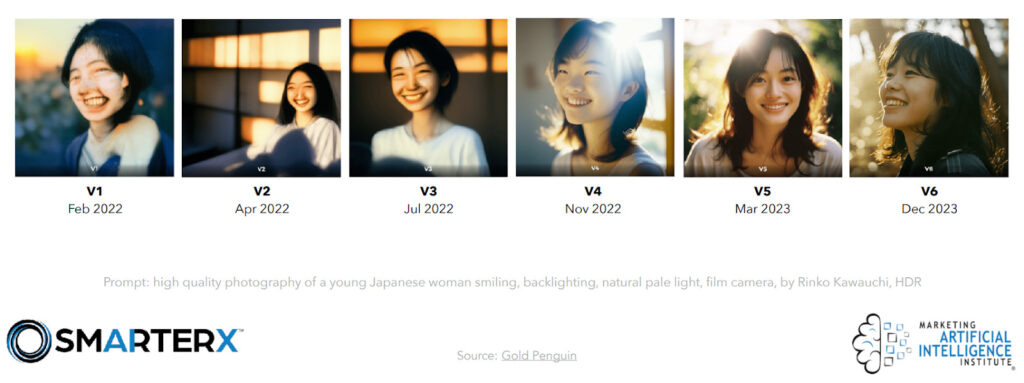The Future of AI in Business: MAICON 2024 Insights
Artificial Intelligence (AI) continues to redefine what’s possible for businesses. At MAICON 2024, leaders from across industries gathered to explore how AI is evolving, how businesses can integrate AI, how to navigate key risks with AI and what the future holds. The conference was a platform for marketing and business professionals to gain insights into AI’s impact on business and marketing, from automation to creative innovation and learn how to apply these technologies for business success.
Focused on practical AI applications for non-technical audiences, MAICON delivered strategies, case studies and future predictions that offer valuable takeaways for businesses looking to stay ahead in the AI revolution.
The Current State of AI and What’s Next
AI technology has come a long way, but the current capabilities of large language models (LLMs) are just the beginning. The conference emphasized that today’s AI is the least capable it will ever be and businesses need to prepare for the rapid advancements that lie ahead.
The image below illustrates just one small use case of AI’s advancements, showcasing the rapid improvement in AI-generated visuals over a short two-year period. Moving from blurry, low-resolution images to photorealistic, highly detailed outputs, AI tools are becoming exponentially more powerful, serving as a clear example of how AI is transforming industries and will continue to drive innovation in ways we have yet to fully imagine.

Source: https://goldpenguin.org/blog/midjourney-v1-to-v6-evolution/
Key AI Trends
- AI Agents and Autonomous Systems: The next big leap in AI is the rise of AI agents—tools capable of taking independent actions on behalf of businesses. These agents will automate tasks, provide advanced customer support and manage business operations, reducing the need for human intervention in routine tasks.
- Strawberry (o-1) Enhanced Reasoning System: OpenAI’s much-rumored Strawberry (o-1) system represents a significant leap in AI’s ability to reason and solve complex problems. This advanced model allows AI to “think through” a problem before arriving at a solution, a breakthrough that enables it to tackle difficult challenges, such as novel mathematical and scientific questions. Early results show that Strawberry (o-1) can outperform human PhD experts in solving complex physics problems, signaling a new era in AI’s capability to handle tasks that require planning and iterative reasoning. This is just the beginning and it points to the vast potential of AI systems in transforming industries that rely on advanced problem-solving.
- Voice Assistants and Robotics: We are on the cusp of voice assistants becoming truly intelligent and robotics is poised to revolutionize industries like manufacturing and logistics. Tesla, for example, has hinted that it could soon transform into a leader in robotics, where robots could handle physical labor and customer interactions. For an example of how intelligent voice assistants are getting, check out our Podcast with AI-deline.
- AI World: Autonomous Infrastructure and Hyper-Personalization: South Korea is pioneering the development of autonomous ports and shipping, where AI systems handle logistics and operations with minimal human intervention, showcasing the future of AI-powered infrastructure. On the consumer side, AI is transforming industries with hyper-personalized products. For example, AI systems can scan a person’s face, assess their preferences and formulate personalized makeup on the spot, illustrating the power of AI in creating tailored, on-demand consumer experiences. Mike Walsh provides an excellent introduction to what an AI world could look like:
- Path to AGI (Artificial General Intelligence): While AGI—an AI that can outperform humans in almost all cognitive tasks—is still a few years away, this evolution could enable AI agents to handle a vast majority of business operations autonomously, reshaping industries and creating new business models. Small companies could generate massive revenue with minimal human resources, powered by clusters of AI agents running their operations.
MAICON AI Timeline
The AI timeline presented at MAICON projected significant developments in the near future that could significantly impact businesses.
- 2024: Smarter AI LLMs start to take on more roles in businesses. Some companies begin to reduce their workforce as automation increases. Strawberry (o-1) starts solving difficult problems better than human experts.
- 2025-2026: AI can now work with a combination of text, voice and images even better becoming 10-100 times more powerful. People start using voice technology as a main way to interact with AI, and AI begins handling complex tasks reliably with humans still overseeing the process.
- 2028-2030: More advanced AI begins to take over most business operations. Smaller companies using AI see big revenue growth, and AI-powered discoveries start transforming industries.
- Beyond 2030: AI continues to progress toward matching human intelligence, performing better than 50-75% of people at most tasks. This brings major changes to the economy and how work is done.
Conclusion
AI is transforming how businesses operate, market and serve their customers. MAICON made it clear that maximizing AI’s potential for business is critical to thrive in the years ahead. Whether it’s through automation, data analysis or personalized marketing, AI offers endless opportunities to improve efficiency and drive innovation.
Explore More AI Topics
Ready to explore how AI can enhance your business? Review more of our articles on AI or contact us to discuss the opportunities AI can bring to your marketing and operations.

